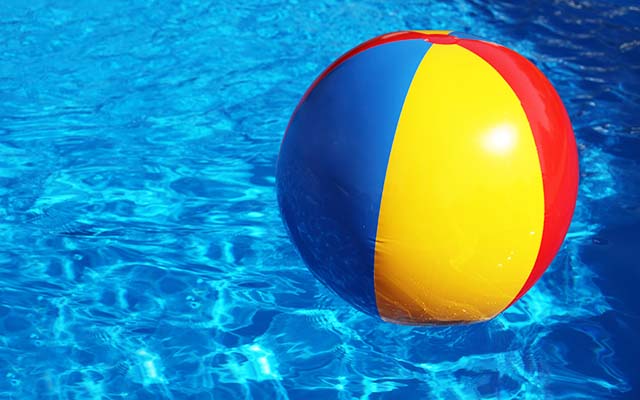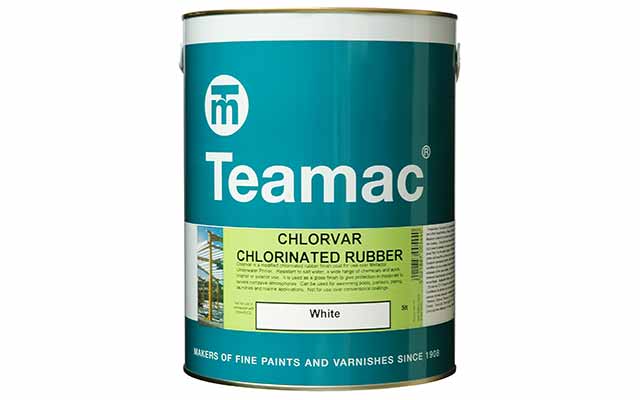Promain is a leading independent supplier of Swimming Pool Paints. Not only do we supply a wide range of Swimming Pool Paint products, Promain also has the technical know how and experience to assist our customers in finding the correct products for their Swimming Pool requirements.
Preparation is key
As with all painting jobs the most important part is the preparation, and the painting of a swimming pool is no exception. Many people believe that as a pool contains water, it will be clean.
Unfortunately this isn’t the case. The chemicals in the water are deposited onto a Swimming Pool’s existing paint or, if it isn’t already painted, the chemical deposits will adhere to the texture of the render.
Another factor to be taken into account is that humans shed fats and oils and also other products such as sun tan lotion. All of which will adhere to the surfaces of a pool’s walls and floor.
Cleaning
We would always assert that the swimming pool walls and floor are cleaned with an alkaline cleaner such as Rust-Oleum ND14 or a product such as Eco Cleaner. Both would degrease and dissolve fats, lime scale or general dirt as well as any traces of algae or mould.
When using these chemicals please ensure the appropriate personal protective equipment (PPE) and safety glasses are worn.
Having cleaned the surface of the swimming pool’s structure, it is important that it’s washed thoroughly with clean water; the use of a jet wash is advised. All loose, friable or flaking paint must be removed and then sanded back to a sound edge. Small cracks should be filled and larger cracks will need to be raked or grinded out and filled with a low slump epoxy filler such as Anglo Verti-Patch and then allowed to set.
Consider Sand Blasting
To achieve the best finish we would always suggest that a pool is sand blasted. This will remove the existing coating, leaving a profile on the render which is ideal for painting. If sand blasting isn’t carried out any repairs undertaken on the render must be allowed to dry before repainting.
Newly constructed pools will need to be acid etched to remove any laitence, this will also help create a profile to the surface. Allow 20 minutes for the etching solution to react, then rinse the surface with copious amounts of water. Then allow to fully dry before vacuuming out any debris. Before painting commences it is crucial that the relevant product data sheets are read.
Swimming pools, unlike many ponds, are constructed to a high standard. They are expected to be structurally sound for the life of the pool, unless unforeseen ground movement takes place. This is often caused by the ground becoming extremely dry in the summer or saturated by rain (and flooding) in the winter.

Structural Damage
Structural damage can be caused by leaving the swimming pool empty for long periods of time, or due to a lack of correct maintenance.
The most widely used paint on rendered or fibreglass (GRP) swimming pools is Chlorinated Rubber Swimming Pool Paint. This paint is not suitable for pool liners, ceramic glazed tiles mosaic, rubber, butyl rubber, asphalt, bituminous or metal surfaces. Many people are under the illusion that Chlorinated Rubber Swimming Pool Paint is like a rubber pool liner; which is not the case.
Chlorinated Rubber Swimming Pool paints are formulated by decreasing the molecular weight of the natural rubber resin, which is then chlorinated to create a polymer. The solution is saturated in hot carbon tetrachloride and the final step is plasticisation, which enhances its protective properties.
Chlorinated Rubber has a low solids content and provides good solubility in solvents. The solvent will vary, depending on the application the paint is formulated for.
Volatile Organic Compound (VOC) reductions, over the past few years, have been a large factor in the demise of sales of this chemically resistant coating. Not only for swimming pool paint but also for marine structures, bridges, plant, dairies, tanks and many other applications, especially on farms.
Chlorinated Rubber paint is not easy to apply, due to its weight. It dries quickly, to a tough glossy coat with a smooth finish. Essentially, it offers good resistance to chlorine and many other chemicals including acids, alkali’s, salt, salt water and oil. It is also impermeable to water and is easily re-coat-able.

Chlorinated rubber paints are not very resilient to heat, however. They tend to become a flexible chalk and degrade as they become hot (but they are non-flammable).
When painting or re-painting a swimming pool it is advised to paint it either before sun rise or whist the pool is in the shade, preferably before the water in the pool has become hot. The reason for this is that chlorinated rubber paint dries extremely quickly and it does need to soak into the surface before it dries, as this creates a better adhesive surface.
Painting a render pool is quite straight forward, the use of a good natural bristle paint brush and a short pile roller is all you will require. One point to note though, is that if using a roller, apply the paint slowly or you will create air bubbles in the paint which will not disappear. Again, this is due to the fast drying nature of chlorinated rubber paints.
Two coats of paint should always be applied – it is recommended that the first coat is diluted to a maximum of 10%, with the correct thinners (please refer to the technical data sheet for the correct thinners).
If you intend to paint a steel, aluminium wood or fibreglass pool it is recommended that a coat of Metaclor Primer is applied as an adhesion and sealer coat. When painting steel it’s recommended that the surface is thoroughly clean, rust free and sand blasted to SA 21/2. If blasting is impractical, mechanical cleaning can be carried out with an electric wire brush (hand preparation is not suitable).
All welds should be ground back and weld splatter should be removed. A good key is required with fibreglass and existing painted surfaces. If there are any existing coatings on the pool a small test should be carried out to ensure there will not be and adversary reaction to that coating.
Using a two pack Swimming Pool Paint system
This is a paint where you add a hardener to the base. A degree of planning is required as these paint have a pot life – that is once mixed you have a time frame – typically 1-2 hours to use the paint, before it goes off in the tin.
Epoxy (two pack) swimming pool paints are extremely durable though, and will offer greater protection than chlorinated rubber paints. However, they are more susceptible to fading in sun light. There is a solution to this and Promain would suggest the application of an epoxy paint such as Coo-Var Profloor This should be followed by a colour stable polyurethane coating such as Coo-Var P101.
The result is that this will offer you the adhesion and durability of an epoxy with the UV stability offered by a polyurethane.
One point to mention is that certain stains can bleed through new coatings. So, if you don’t intend to remove them, before painting, a test area on a small area of staining should be made before commencing the end project.
After the pool has been painted the coating MUST be allowed, not only to dry, but to cure. All Swimming Pool Paints will take 7 to 10 days to cure and many manufactures recommend that for every day or part day of rain during this period, an allowance of a further two days should be made, to ensure the paint to cure.
Following the curing period, the swimming pool should be rinsed thoroughly to remove any solvent that may still be present on the surface of the paint. Fill the pool with clean water to the required level, before you add any chemicals. Add the chemicals slowly and do not pour the chemical solution into the pool in one area. Spread the chemicals around to avoid concentration, as this may bleach the colour of the pool, and keep the pump running to help mix the chemicals evenly.
If you need further or information please contact the technical department at Promain.

